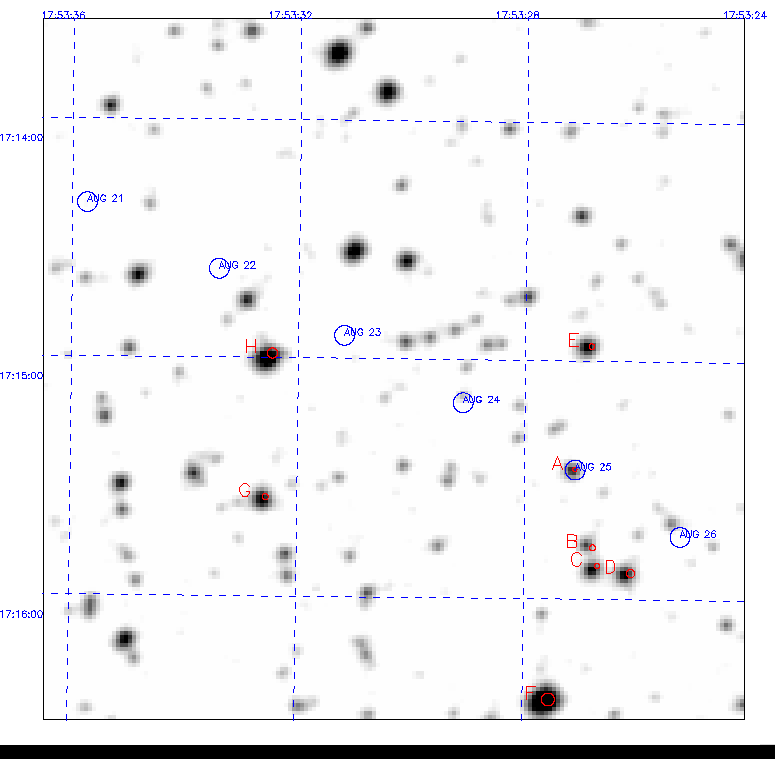
There is a potential occultation of the star P598.2 by Pluto on 2008 Aug 25 at ~4:46 UT. The star is faint but very red. Also, the location (US) and the slowness of the event makes this logistically easier than some. More information is at pages posted by Bruno Sicardy's group (Meudon) and Jim Elliot's group (MIT) .
Telescope Approx. Location Observer Cameras WIRO 2.3m Laramie WY Cathy Olkin PHOT (possibly w/ dichroic) Steward 90" Tuscon AZ Marc Buie PHOT (possibly w/ dichroic) Lick 36" (Crossley) San Jose CA Leslie Young PHOT Lowell 42" Flagstaff AZ Larry Wasserman PHOT Sommers Bausch 24" Boulder CO not yet decided PHOT McDonald 36" Fort Davis TX Eliot Young PHOT UCF 20" (Robinson) Orlando FL Nate Lust Facility CCD Palomar 24" Los Angeles CA Mike Brown Facility CCD Table Mountain Wrightwood CA Gerbs Bauer Facility CCD
Star Positions
Using the remeasurements of the Pluto path by UCAC in 2006 as our reference position, we find the following star positions:
Source RA Dec dra ddec errx erry -------------- -------------- ------------- ----- ------- ---- ---- UCAC2_2006 17:53:27.1056 -17:15:27.517 0 0 64 42 Lowell31 17:53:27.0981 -17:15:27.528 -107 -12 88 73 Brazil 17:53:27.1032 -17:15:27.546 -34 -29 35 35 MIT 17:53:27.0975 -17:15:27.454 -116 63 10 9 -------------------------------------------------------------------RA and Dec are epoch of date (where proper motion is know), equinox J2000.
Brazil - Brazilian astrometric group that Bruno Sicardy and co. are working with, from email sent by Bruno 2008 July 28.
MIT prediction above uses the value as of 2008 07 28. The value has since been updated. See Jim Elliot's group's prediction
Lowell 31-in are from two nights on the 31 inch telescope at Lowell Observatory in August 2007.
The plot of the offsets is below. Notice that the MIT group is much farther north than the others.
With only four points (and rather large errors on the Lowell measurements), it's tough to say whether or not the positions fall into two camps in RA, two near the UCAC 2006 and Brazilian RA and two near the MIT and 31". On other events, a dichotomy was a warning of source confusion. For whatever reason (seeing? centroiding algorithm?) the UCAC positions are often skewed toward bright stars that are even a few arcsec away. But the Brazzilian and UCAC (2006) positions are close.
For this event, the difference in RA is important. For example, the Lowell 31" track is about a radius south of the UCAC2006 or Brazil track. MIT is a diameter south, getting about a radius from the RA difference and another from the dec.
Pluto offsets
Using the DE-413 and PLU-013 ephemerides from JPL as our reference ephemerides, the following offsets are reported
Source dra ddec (milliarcsec) ------------ ----- ---- DE-413+PLU-013 0 0 Bruno Sicardy -22.6 114.0 PHOT -22.2 37.7 MIT 2008-07-28 -1.3 71.0 ------------ ----- ----Bruno's offset is from the 22 June 2008 event.
PHOT's (our group's) offset is from the 31 July 2007 event.
The MIT offset is described at Jim Elliot's group's prediction
Globes
I've arranged the predictions with the northern-most track in the upper left. Each group's best prediction (at the time of the last edit of this page) is highlighted in red.
| Brazil star position | UCAC2_2006 star position | MIT star position | Bruno's Pluto offest |
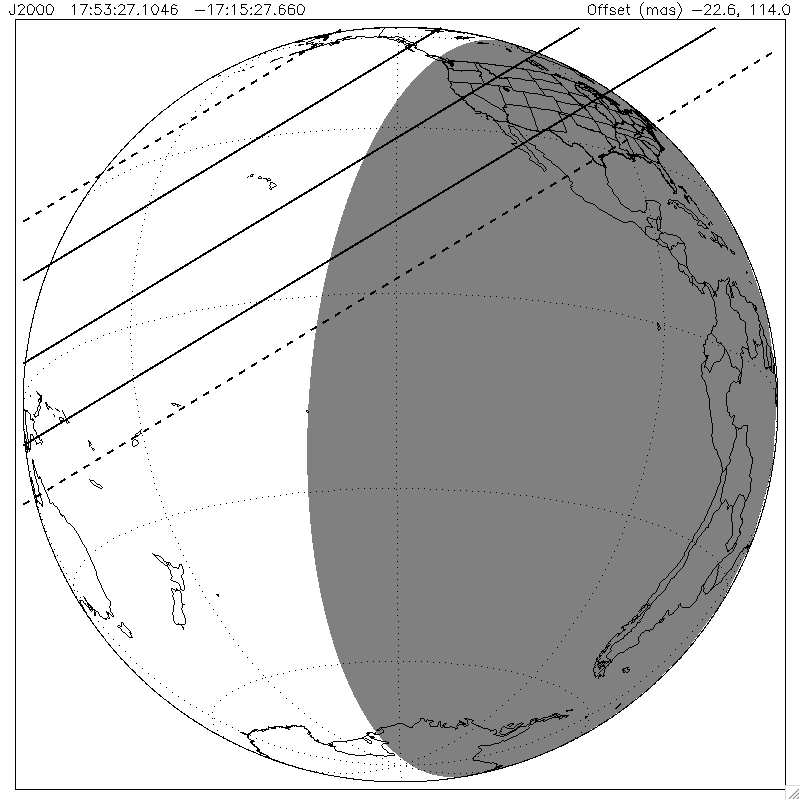
|

|
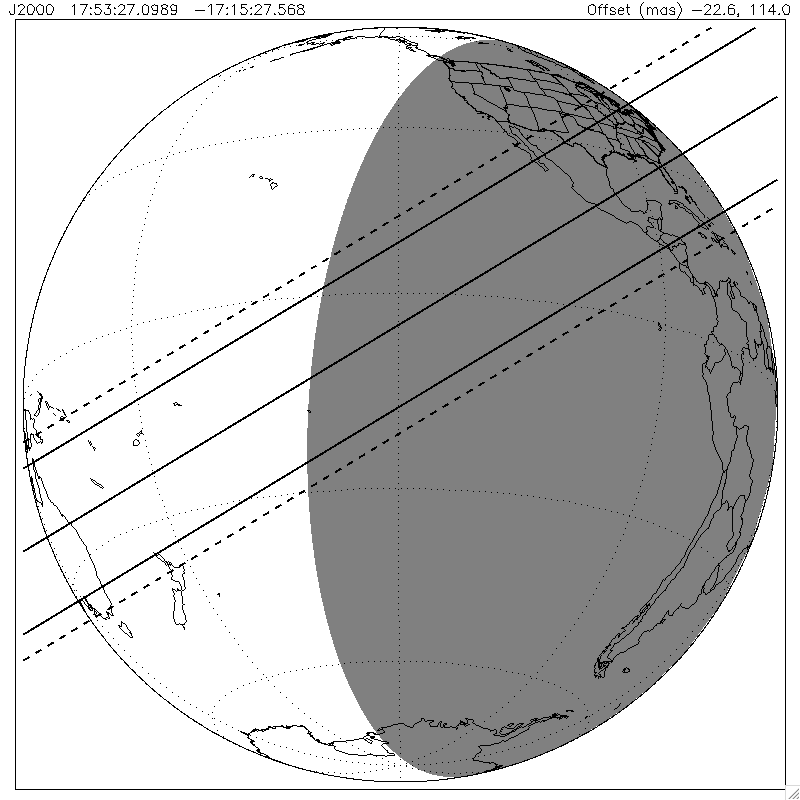
|
MIT's Pluto offest |
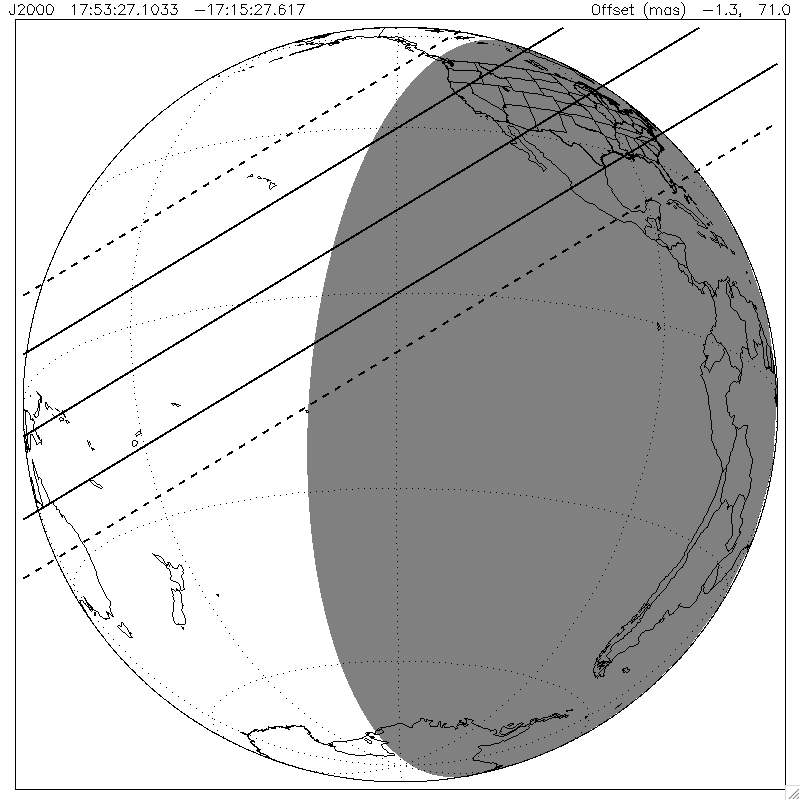
|
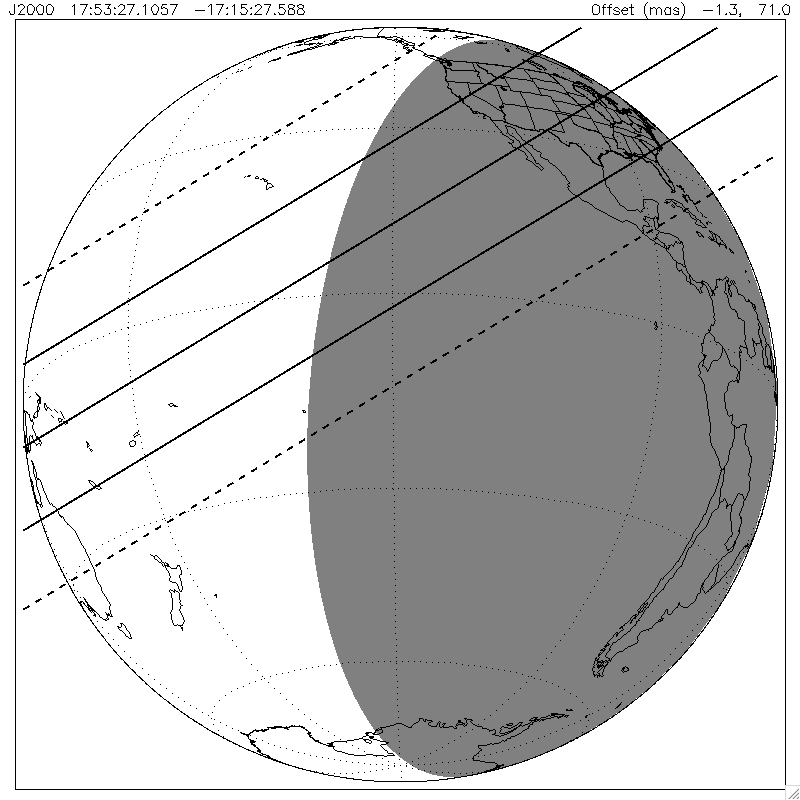
|
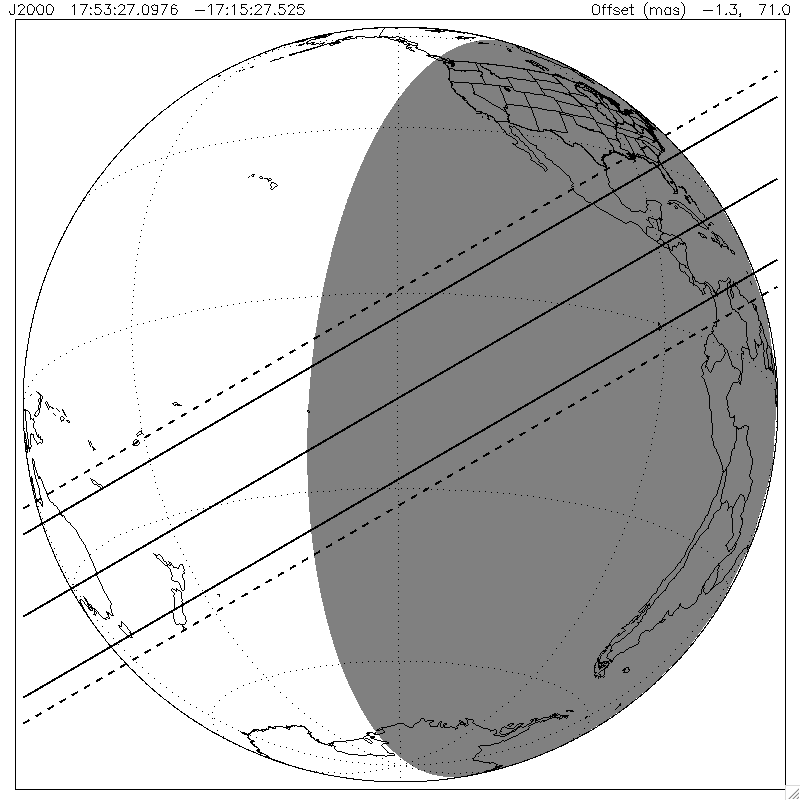
|
PHOT's Pluto offest |
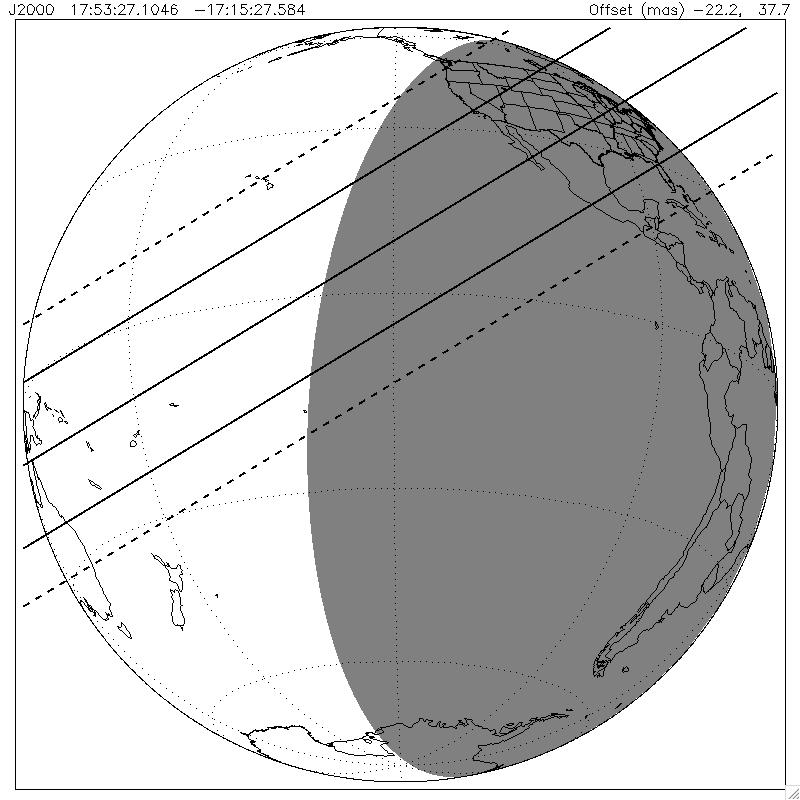
|

|
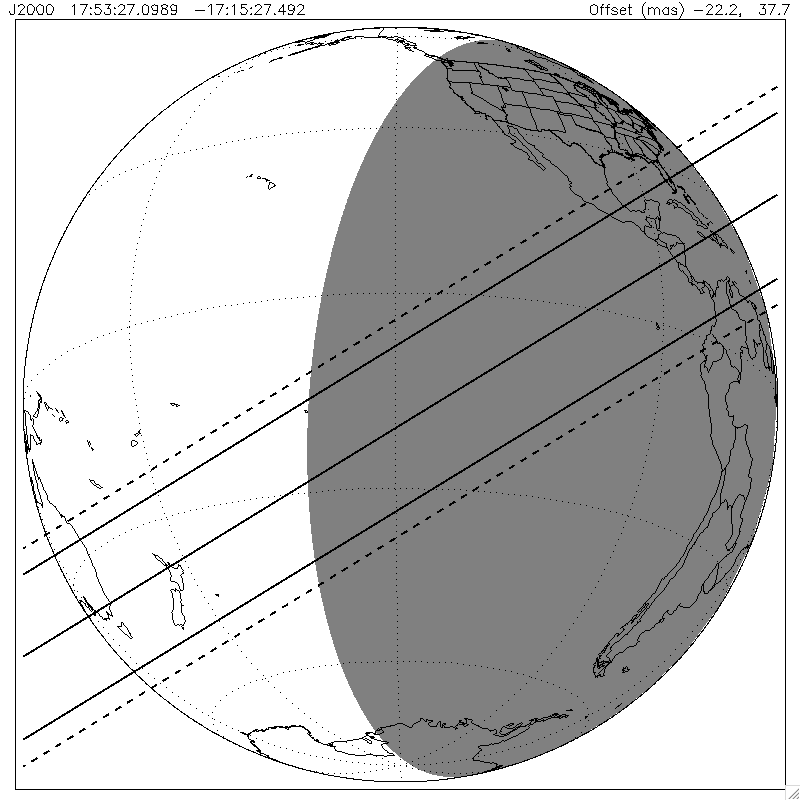
|
No Pluto offest from DE413 |
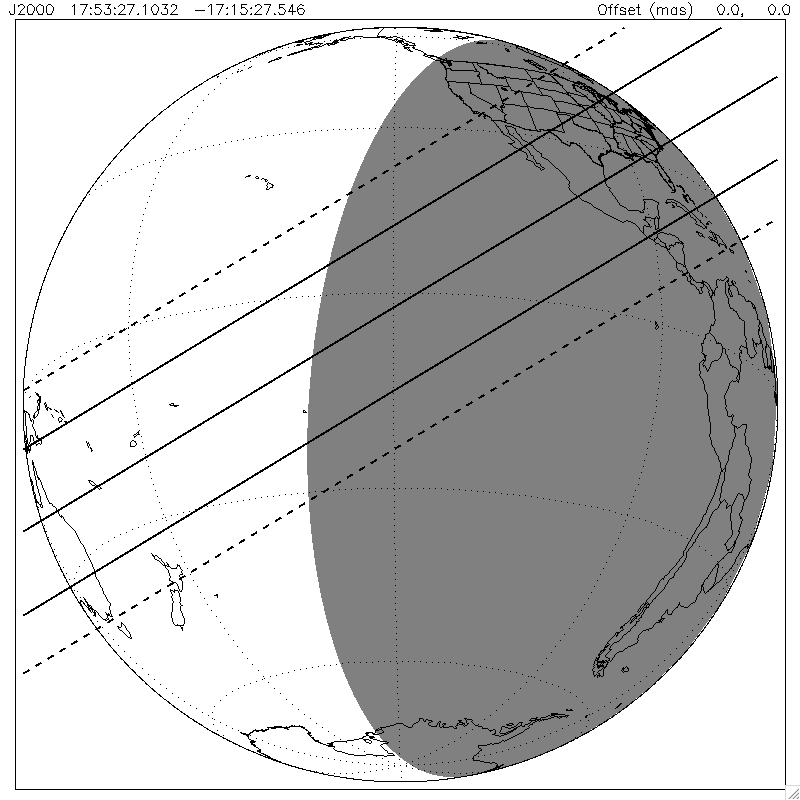
|
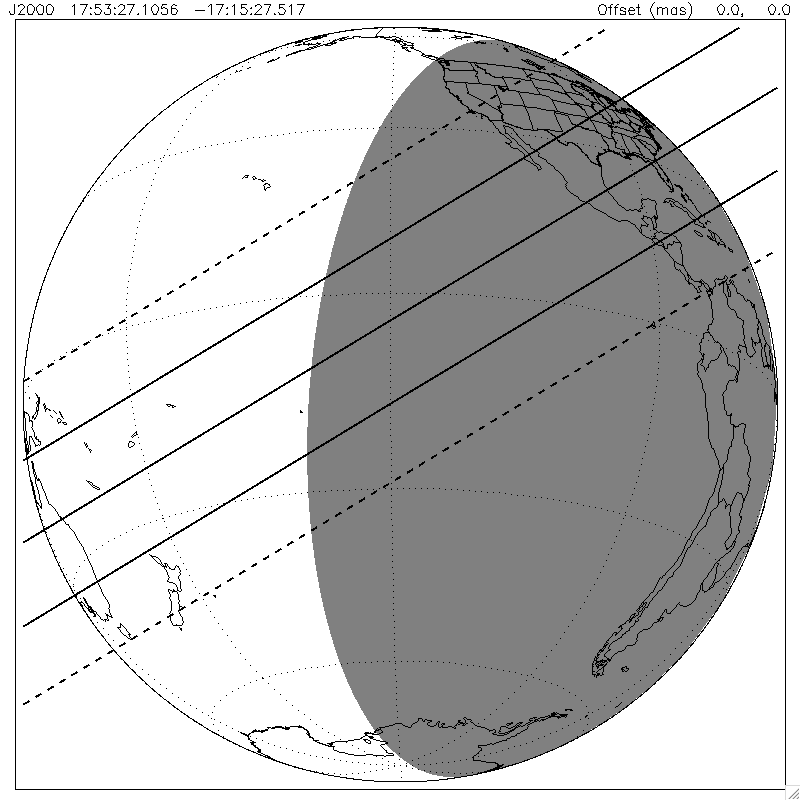
|
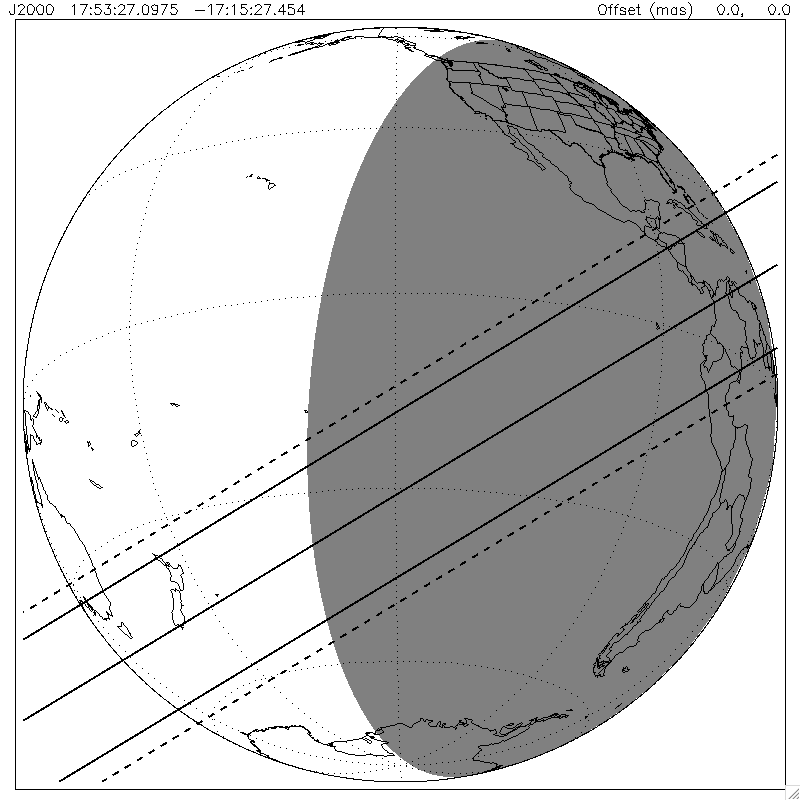
|
From Bruno Sicardy, 2008 July 27 star: R=15.2, I=14.0, JHK=12.0, 11.1, 10.7 Pluto: R=13.8, I=13.5, JHK=13.0, 12.9, 13.3
Digital Sky Survey images with the location of Pluto at 4:30 UT on Aug 21 to Aug 26. Also marked are UCAC2 magnitudes (between V and R) of field stars. Sorry that the minus sign on the dec got cut off.
| 10 arcmin | 5 arcmin | 2 arcmin |
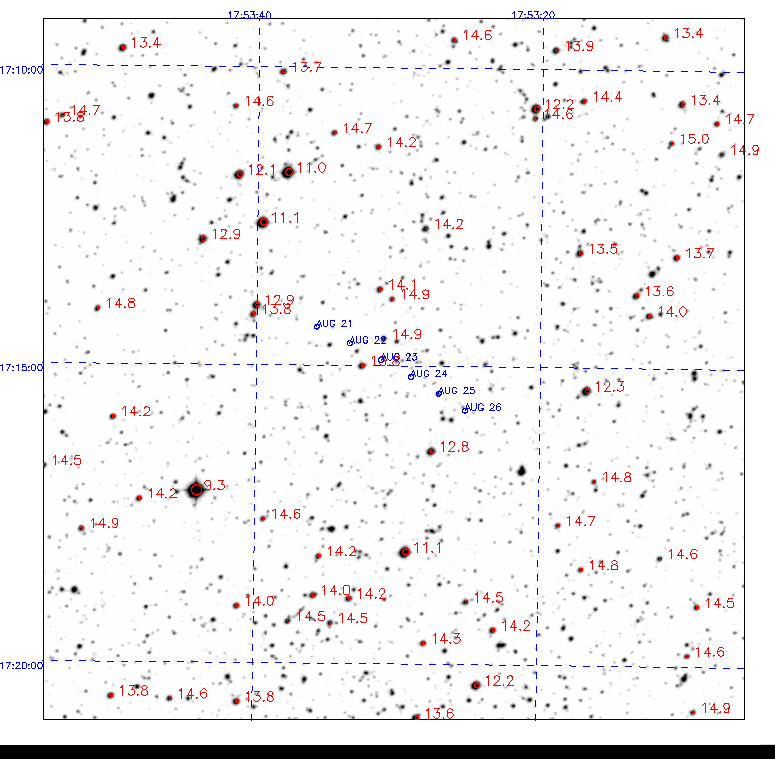
|
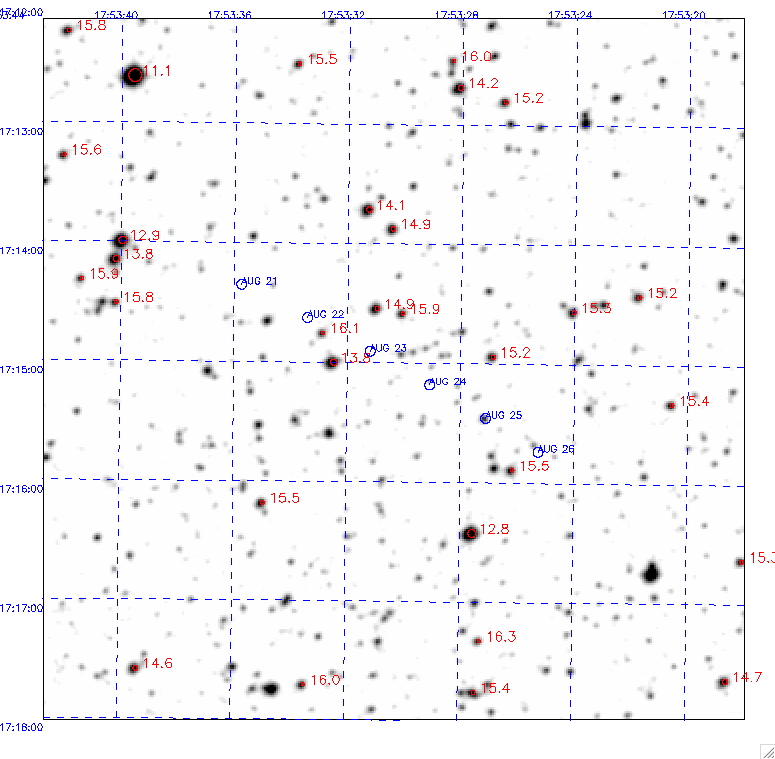
|

|
Go 12 or 14 sec per frame (0.5 points per scale height) if things are really dire (6 s readout, or heavy clouds). This will be good for constraining the geometry of where in Pluto's shadow we hit.
Go 6 or 7 sec per frame (1 point per scale height) if you have 3 sec readout. This will be good for constraining the geometry, and modelling the spatial variation of how Pluto's atmosphere.
Go 3 sec per frame (2 points per scale height) if you have < 1.5 s readout and if you're photon limited at 3 sec. This can be used for geometry, spatial variation, and to get the vertical structure of Pluto's atmosphere.
Go faster, up to 0.100 s per frame (~2 points per Fresnel scale), if you can have < 10% dead time and are photon limited at your rate. This can be used for geometry, spatial variation, vertical structure, and characterizing wave activity.
ID USNO-B1.0 number I mag RA (J2000) Dec (J2000) -- ---------------------- ----- ------------- ------------ A USNO-B1.0 0727.0710748 14.49 17:53:27.1130 -17:15:27.340 B USNO-B1.0 0727.0710722 14.13 17:53:26.7860 -17:15:46.920 C USNO-B1.0 0727.0710712 13.49 17:53:26.7050 -17:15:51.540 D USNO-B1.0 0727.0710670 14.25 17:53:26.1090 -17:15:53.340 E USNO-B1.0 0727.0710725 13.97 17:53:26.8360 -17:14:56.310 F USNO-B1.0 0727.0710772 13.06 17:53:27.5440 -17:16:25.280 G USNO-B1.0 0727.0711158 13.64 17:53:32.5580 -17:15:35.010 H USNO-B1.0 0727.0711152 12.95 17:53:32.4590 -17:14:58.830Here is a finder chart with reference stars marked:
